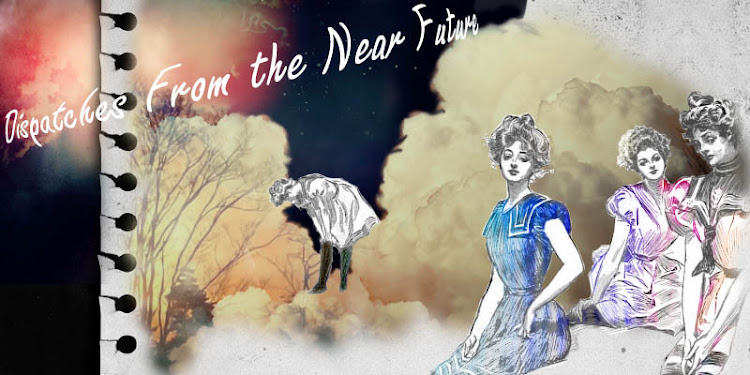So Kiki proposed an interesting project on Monday afternoon: To attempt the hairstyles of the times with some of the wigs from the costume shop. Digging through the wigs, I could only find on

e that was a suitable length to imitate hairstyles from the 1800's.

It took a bit of brushing after finding it in this state, but I eventually managed to get it tame enough to work with. I'm quite grateful that it was such a nice thick wig, as these hairstyles require quite a bit of hair as well as extensions.
First I looked over our bonnets and imagined what sorts of styles might allow each one to be propped up in the proper way. Then, using both
Victorian Hairdo's & Coiffures and
Victorian Hats Vol. 2 and
4, I began to search for somewhat simple, but appropriate do's. I found the following:

The first was considerably easier to decipher, though I found that I didn't have nearly enough hair to get it looking exactly perfect. The first instruction was to part the hair in the center nearly all the way back like so:

It then instructs to divide the hair into two parts on either side. At first I thought it meant vertically, but after a while of trying this and failing at it, I realized it meant horizontally. The top portion of each side is then to be placed over a crepe, described in the book's glossary as being

"a pad with tapered ends formerly used in women's hair styles to give the appearance of greater thickness". Well, I had none available and, as the costume shop was locked and I couldn't make one with the sewing machines, I grabbed some materials from underneath the dressing room table and improvised. My "crepes" are made from rolled up thick cotton lining tied together with rubber bands. As Spock would say "crude, but effective".
The instructions said to comb the hair over the crepe and brush it towards the back, but I found it easier to keep the crepe in by rolling it up into the hair and pinning it with bobby pins. The lower hair is then to be brushed towards the back of the head. With all the hair in th

e back (saving a little bit at the nape just next to the ear on either side), make a "chingon of braids".

It helps to tie the ends of the braids with rubber bands. Once you make the chingon, they will be tucked under the rest of the hair and thus no longer be visible. I only made two, as I was limited with the amount of wig hair I had, but three or four would make an even more impressive looking chingon! In the picture to the left, you can see that one of the crepes is sticking out. Don't worry about that at all, they're easy to move around, so just wiggle it forward or backward and cover it with more hair. My crepes are a little long (about 6") for this project so I would suggest making them a little shorter, perhaps 4" or 5" so that they sit along the crown from about 1/2" to 1" off the hairline in the front.
Now on to the chingon. The book instructs to "make the chingon of braids, coiled snail-wise...and finish with two Marie Antoinette curls behind the ears". Starting from the outside, curl the braids inwards, tucking the rubber-banded ends underneath the braids. If you have a thicker, longer wig, continue doing this, piling more braids around the initial chingon. Make sure to wrap one around the circumference of the coiled braids [see engraving above, not pictured in my example].
I, of course, couldn't help



but try it on with one of our 1860's bonnets!
Anyway, it came out more messy than I would have liked, but these pictures hopefully give the basic idea. If I'd been able to hairspray and curl the wig, plus add extensions, I would've had a field day! Of course, I totally had a ball doing this anyway!
Finally, I attempted two more hairstyles, which were not successful in the least, but I'll post my attempts here nonetheless! They are two different styles of chingon from the late 1800's, which prop up little hats such as the one shown, which is from the 1890s. The hairstyle is, admittedly, a little early for the hat I chose, but I love that cute little hat with all my soul.


As always, considerably more later.










































